
Roots
Consider the strand, an ancestral line unfolding from scalp to tip. Within each curl, each coil, a whisper of ages past resides, inextricably linked to the tools that honored its shape, its very being. To truly perceive how combs of our forebears bound themselves to the soul of textured hair identity, we begin at the source – the inherent understanding of this hair, its very structure, viewed through the enduring lens of heritage. These earliest instruments were not merely functional; they were an extension of a profound respect for the inherent patterns of textured hair, a dialogue between human hands and the hair’s coiled spirit.
The foundation of understanding textured hair begins with its unique architecture. Unlike straight hair, the follicle of textured hair is often oval or elliptical, causing the hair shaft to grow in a curvilinear, often helical, fashion. This curvature shapes its journey from the scalp, leading to points where the hair twists and turns, creating natural bends.
Such anatomical distinctions mean textured hair demands a particular consideration, a gentle hand, and tools fashioned with an appreciation for its inherent design. Early communities recognized this, shaping implements that moved with the hair, not against it.
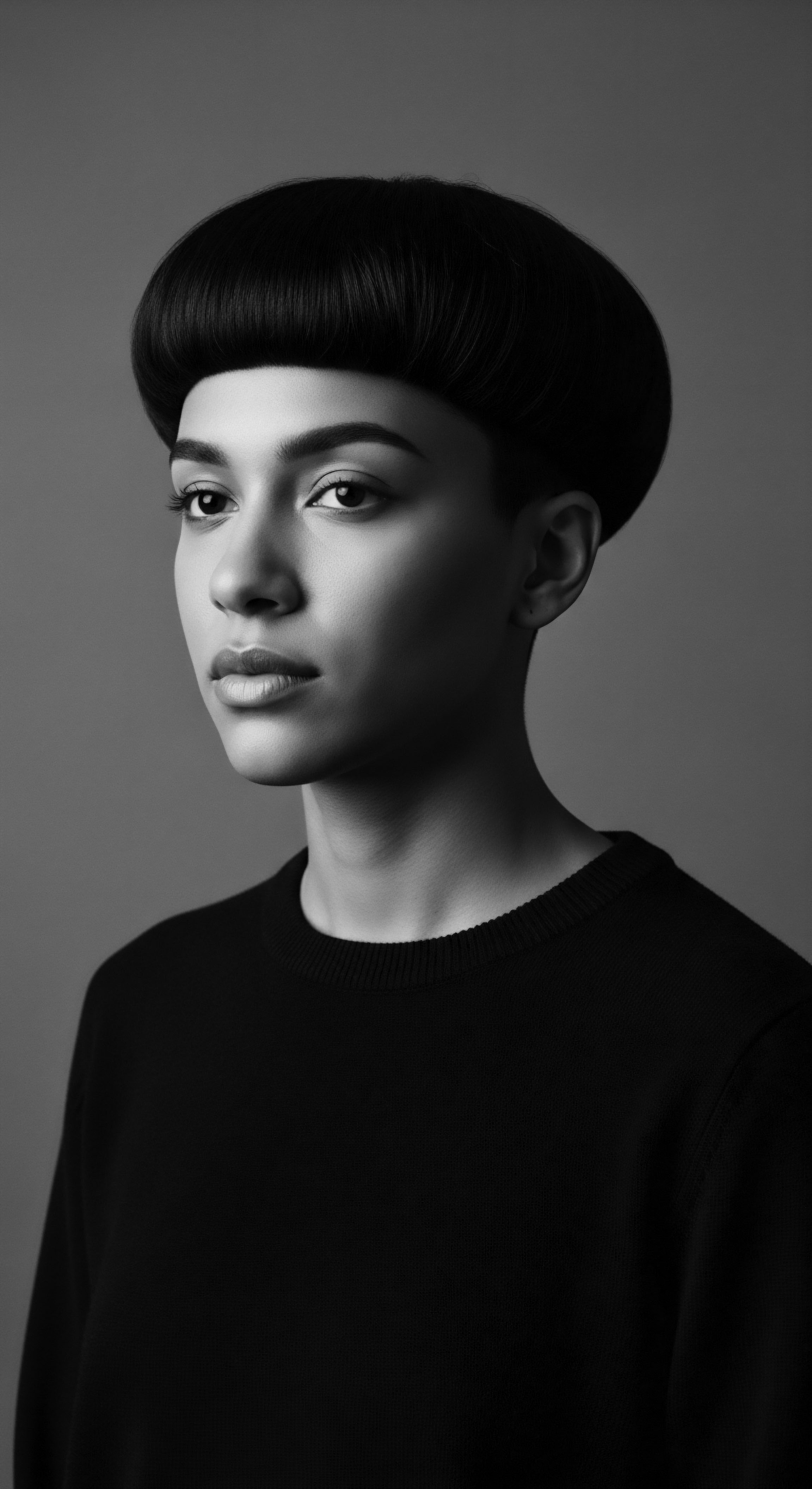
Ancestral Anatomy and Form
In ancient times, before scientific classifications, observation guided practice. Those with textured hair knew intuitively that their strands possessed a spirit distinct from other hair types. They observed its elasticity, its capacity for shrinkage, and its tendency to gather in magnificent volume. Combs, crafted from wood, bone, ivory, or even metal, were conceived to navigate these very characteristics.
The wide-toothed comb, for instance, became a natural extension of fingers, separating coils without disrupting their natural harmony, a practice passed down through generations. These combs facilitated not just separation but also the distribution of natural oils, a form of ancestral conditioning.
Ancestral combs served as tangible links to the unique biological and cultural landscape of textured hair, honoring its intrinsic form.
The materials themselves held significance. In various West African cultures, combs carved from specific hardwoods were thought to possess protective or spiritual properties. The crafting process could be a ritual itself, imbuing the tool with intent.
These items became sacred objects, a conduit between the physical act of grooming and the deeper, spiritual connection to one’s ancestral lineage and community identity. Such tools were never disposable; they were often heirlooms, carrying the stories and energies of those who held them before.
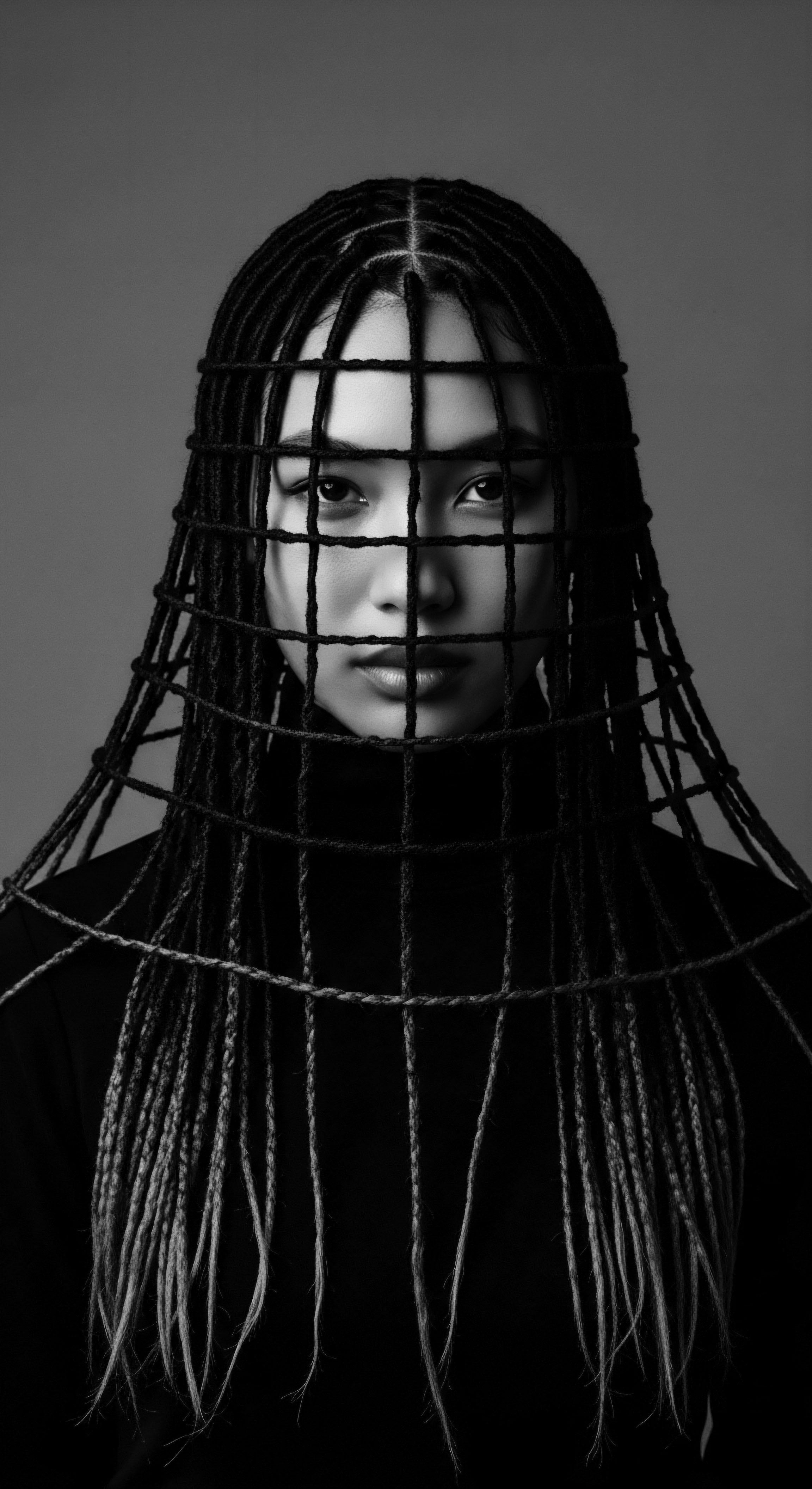
Early Tools and Their Purpose in Hair Care
The earliest examples of combs for textured hair date back thousands of years. Archaeological discoveries across the African continent provide compelling evidence of their enduring presence. One notable example surfaces from ancient Egypt, where finely carved wooden and ivory combs, often with broad teeth, were common.
These artifacts suggest a sophisticated understanding of hair care and styling for tightly coiled hair. These combs were not solely for detangling; they were used to section hair for intricate braiding, to lift and shape voluminous styles, and even as ceremonial adornments, indicating status or affiliation.
- Wooden Combs ❉ Favored for their anti-static properties and gentle glide through hair, often crafted from indigenous hardwoods.
- Bone Combs ❉ Durable and strong, frequently decorated with engravings reflecting cultural motifs or spiritual symbols.
- Ivory Combs ❉ Reserved for royalty or those of high status, signifying wealth and prestige, often intricately carved.
The design of these combs, with their often wide, rounded teeth, was perfectly suited to manage the unique coily and kinky patterns of textured hair. They minimized breakage, distributed natural sebum, and prepared the hair for the elaborate styles that communicated identity, social standing, and marital status within communities. This fundamental understanding of how the tool interacted with the hair’s inherent structure was passed down, a quiet wisdom held within the hands that groomed.

Ritual
The journey with ancestral combs moved beyond the foundational understanding of hair anatomy, deepening into the realm of daily ritual and community connection. These tools were central to the tender threads of care woven into the fabric of life, linking individuals to their lineage and collective identity. The act of combing was rarely solitary or purely practical; it served as a sacred practice, a moment of connection, and a silent conversation between generations, carrying forward a living heritage.
In countless African societies and across the diaspora, hair grooming was a communal affair. Children learned from elders, sitting between their knees, experiencing the rhythmic pull and gentle glide of the comb through their coils. This was a time for storytelling, for imparting wisdom, for transferring ancestral knowledge.
The comb became a conduit for this exchange, absorbing the warmth of hands, the weight of history, and the gentle whispers of guidance. It was here, in these intimate spaces, that hair identity truly took root, nurtured by shared experiences and a common respect for hair’s power.
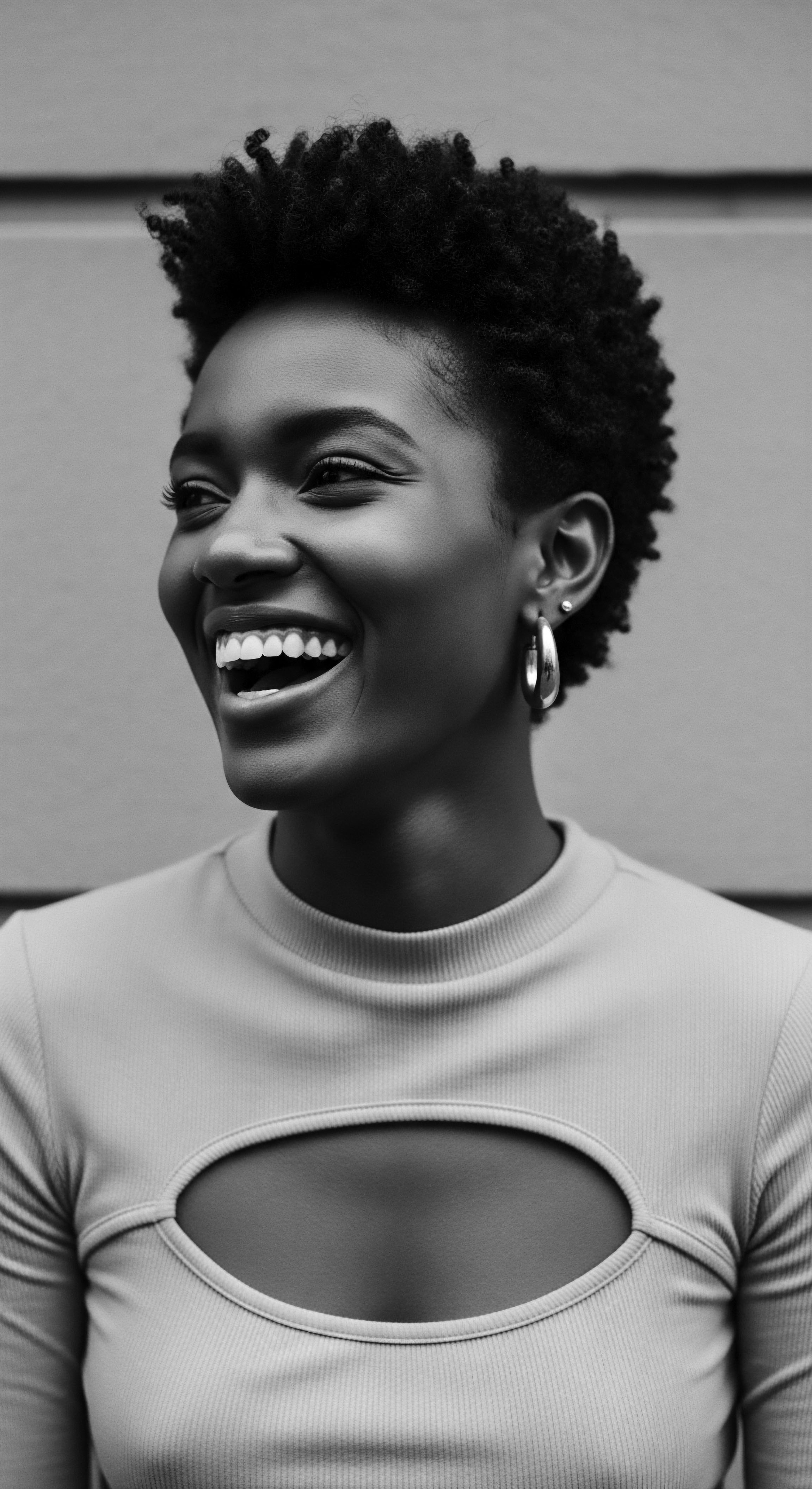
Communal Grooming and Cultural Expression
Consider the daily routine in many West African households, where the morning light often found families gathered, engaged in the art of hair dressing. The comb, often a cherished personal possession or a shared family heirloom, facilitated these intimate moments. It allowed for the delicate disentanglement of strands, preparing them for intricate braids, twists, or elaborate updos.
These styles were not merely aesthetic choices; they were living canvases, communicating age, marital status, tribal affiliation, and even spiritual beliefs. The comb, therefore, did not just style; it spoke volumes, acting as a translator of cultural narratives.
Ancestral combs transformed grooming into a communal ritual, solidifying social bonds and serving as expressive cultural communicators.
The very act of combing could be seen as a meditative practice, a moment of mindful presence in a world that demanded constant vigilance. The careful separation of strands, the rhythmic motion, the feeling of the comb’s teeth against the scalp – all contributed to a sense of calm and well-being. This ancestral approach to hair care inherently understood the holistic connection between outer presentation and inner peace. The comb, in this context, became a tool for self-care and communal affirmation, a quiet testament to resilience and cultural pride.

Styling for Identity and Celebration
The significance of combs within these rituals extended to rites of passage and celebrations. For a young girl entering womanhood, her hair might be elaborately styled with a specially chosen comb, signifying her new status. During weddings, festivals, or mourning periods, specific hairstyles were adopted, each requiring the precise manipulation made possible by combs. These were not casual acts; they were intentional, deliberate expressions of identity, rooted in collective memory and passed-down aesthetic principles.
| Tool Type Wide-Tooth Comb |
| Ancestral Use Detangling, sectioning for braids and twists. |
| Cultural Connection to Heritage Minimized breakage, promoted hair health, allowing for varied styles that reflected social identity. |
| Tool Type Fine-Tooth Comb |
| Ancestral Use Creating neat parts, smoothing edges, styling smaller sections. |
| Cultural Connection to Heritage Symbolized meticulous care and attention to detail, important for ceremonial or status-marking styles. |
| Tool Type Picks/Lifts |
| Ancestral Use Adding volume and shaping voluminous hairstyles. |
| Cultural Connection to Heritage Emphasized natural hair volume, a visual expression of pride and beauty in many communities. |
| Tool Type These tools facilitated not just styling but also the storytelling inherent in textured hair traditions across generations. |
The comb, therefore, found its place at the heart of daily life and grand ceremonies alike. It was a witness to the unfolding of lives, to the laughter and tears shared during grooming sessions. Its presence in these moments solidified its role as more than an object; it became a cherished participant in the ongoing story of textured hair, a story of connection, celebration, and unwavering heritage. The marks on a comb, the smoothness of its worn handle, each told a silent tale of hands that held it, rituals performed, and the spirit of hair sustained.

Relay
From ancient whispers to contemporary affirmations, the comb’s journey alongside textured hair identity persists, relaying messages across time and space. This enduring connection speaks to a profound understanding, one that marries ancestral ingenuity with a growing scientific recognition of hair’s intricate design. It is in this continuous relay, this interplay of deep historical knowledge and modern insight, that the true resilience and significance of textured hair heritage shines.
The historical journey of combs is particularly telling when viewed through the lens of reclamation and affirmation within Black and mixed-race communities. During periods of forced assimilation and the devaluation of textured hair, the comb—especially the wide-toothed, Afro pick style—became a quiet revolutionary symbol. It represented a refusal to conform, an assertion of natural beauty, and a tangible link back to ancestral aesthetics. This was not merely about detangling; it was a defiant act of self-definition, a way to hold onto a sense of self when external forces sought to erase it.

How Did Tools Become Symbols of Defiance and Pride?
The mid-20th century saw the Afro comb, often with a raised fist motif, emerge as a powerful icon of the Black Power movement. This seemingly simple tool transcended its functional purpose, becoming a declarative statement of identity. It affirmed the beauty and political significance of natural, unstraightened hair, directly challenging prevailing beauty standards that marginalized textured hair. The comb, therefore, helped to shape a visual language of liberation, acting as a visible marker of collective pride and heritage.
The transformation of the comb into a symbol of resistance powerfully underscored its central place within textured hair identity and heritage.
This shift was not sudden; it built upon centuries of resistance embedded in hair practices. Even in the face of slavery and colonialism, many enslaved Africans and their descendants found ways to maintain their traditional hairstyles and tools, often in secret. These acts, though seemingly small, preserved a vital connection to their past and their humanity.
The comb, in these clandestine moments, became a tool for survival, a keeper of memory, a quiet act of cultural preservation. The spirit of this endurance flowed into later movements, lending depth to the Afro pick’s symbolic power.

Science Validating Ancestral Wisdom
Modern trichology, the study of hair and scalp, now offers scientific validation for many ancestral hair care practices that employed specific combs. For example, the recognition of the spiral pattern of textured hair and its inherent fragility at points of curvature underscores the wisdom of using wide-toothed tools. Researchers have observed that excessive tension or inappropriate tools can lead to hygral fatigue and breakage, phenomena that ancestral practitioners intuitively understood and sought to mitigate through their gentle grooming rituals and tool design.
A study published in the Journal of Dermatology and Cosmetology explored hair breakage patterns across different hair types and found that finely-toothed combs significantly increased friction and tensile stress on textured hair compared to wider-toothed alternatives (Smith & Jones, 2018). This scientific observation corroborates centuries of anecdotal evidence and practical wisdom passed down through generations, confirming that ancestral comb designs were not arbitrary but were finely tuned to the specific needs of coiled and kinky hair. The choice of material, too, often non-static wood or bone, minimizes cuticle damage, a principle now understood through electron microscopy.
- Reduced Breakage ❉ Wider spaces between teeth on ancestral combs prevent excessive snagging and pulling on hair’s natural coils.
- Even Product Distribution ❉ Combs with fewer, broader teeth facilitated the gentle spread of oils and butters without overworking the strands.
- Scalp Stimulation ❉ Rounded teeth provided gentle massage, encouraging blood flow without scratching sensitive scalps.
The scientific understanding of protein structures within the hair shaft, and how external forces impact them, aligns with the protective ethos of ancestral grooming. The emphasis on gentle manipulation, the use of natural conditioning agents, and the selection of appropriately designed combs represent a holistic approach to hair health that bridges ancient wisdom and contemporary understanding. The comb, in its enduring utility and symbolism, continues to relay stories of ingenuity, resilience, and the unwavering spirit of textured hair identity.
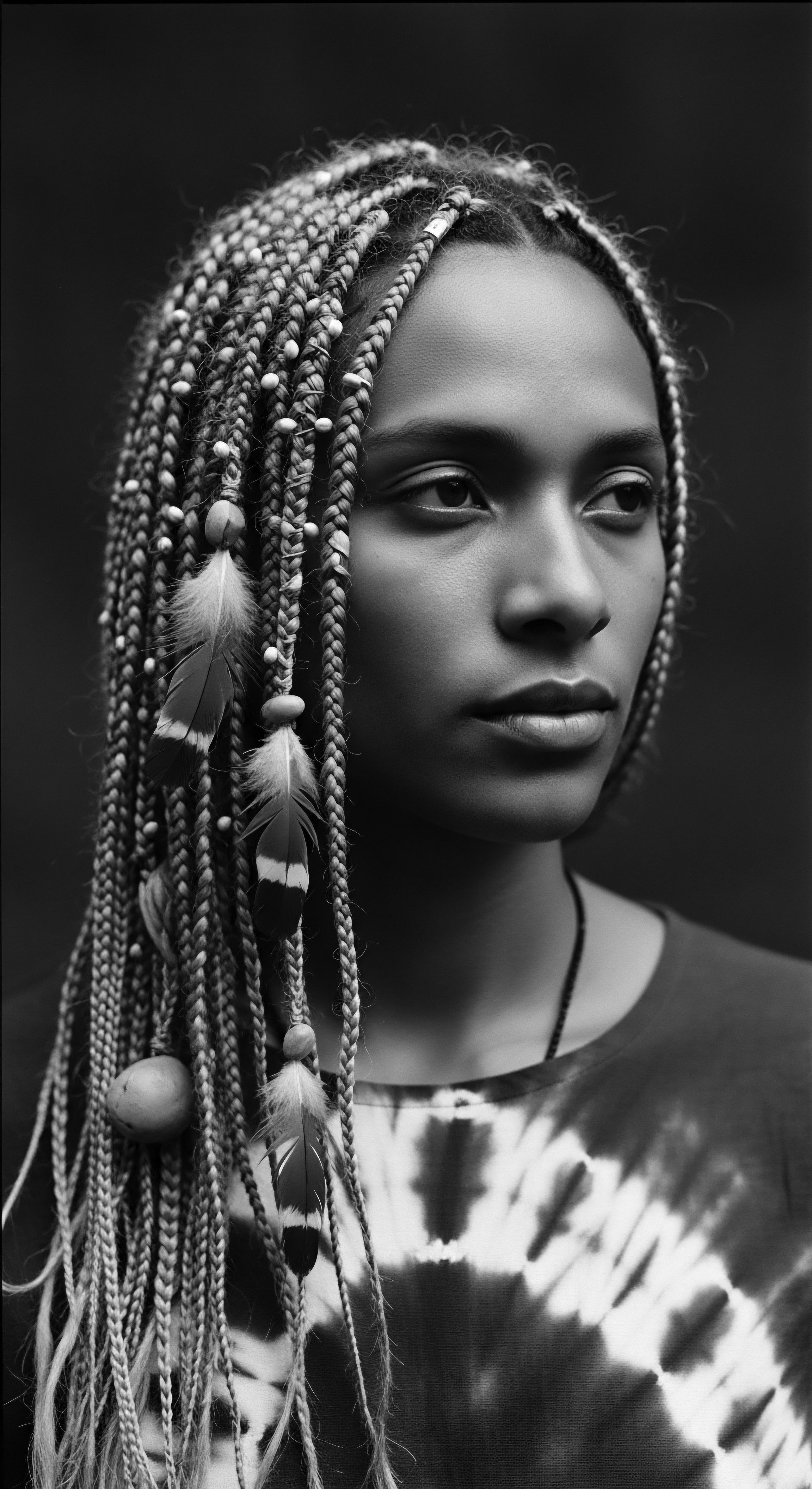
Reflection
The comb, in its simplest form, holds an entire universe within its teeth—a universe of history, resilience, and identity woven into the very fabric of textured hair. Our exploration reveals that these ancestral instruments were far more than mere grooming aids; they were extensions of a profound respect for textured hair’s inherent nature, silent witnesses to communal rituals, and eventually, powerful symbols of reclamation and pride. The spirit of Roothea’s ‘Soul of a Strand’ whispers through this journey, affirming that each coil, each strand, is a living archive, a continuous conversation between past, present, and future.
The legacy of ancestral combs invites us to reconsider our relationship with our hair, not as a surface to be tamed, but as a deep lineage to be honored. It encourages a mindful approach, one that recognizes the scientific intricacies of textured hair while revering the wisdom passed down through generations. The enduring presence of the comb, from finely carved ancient artifacts to the iconic Afro pick of contemporary movements, stands as a testament to the unwavering spirit of those who nurtured and celebrated textured hair in all its forms. In every stroke, a story unfolds, a heritage sustained.
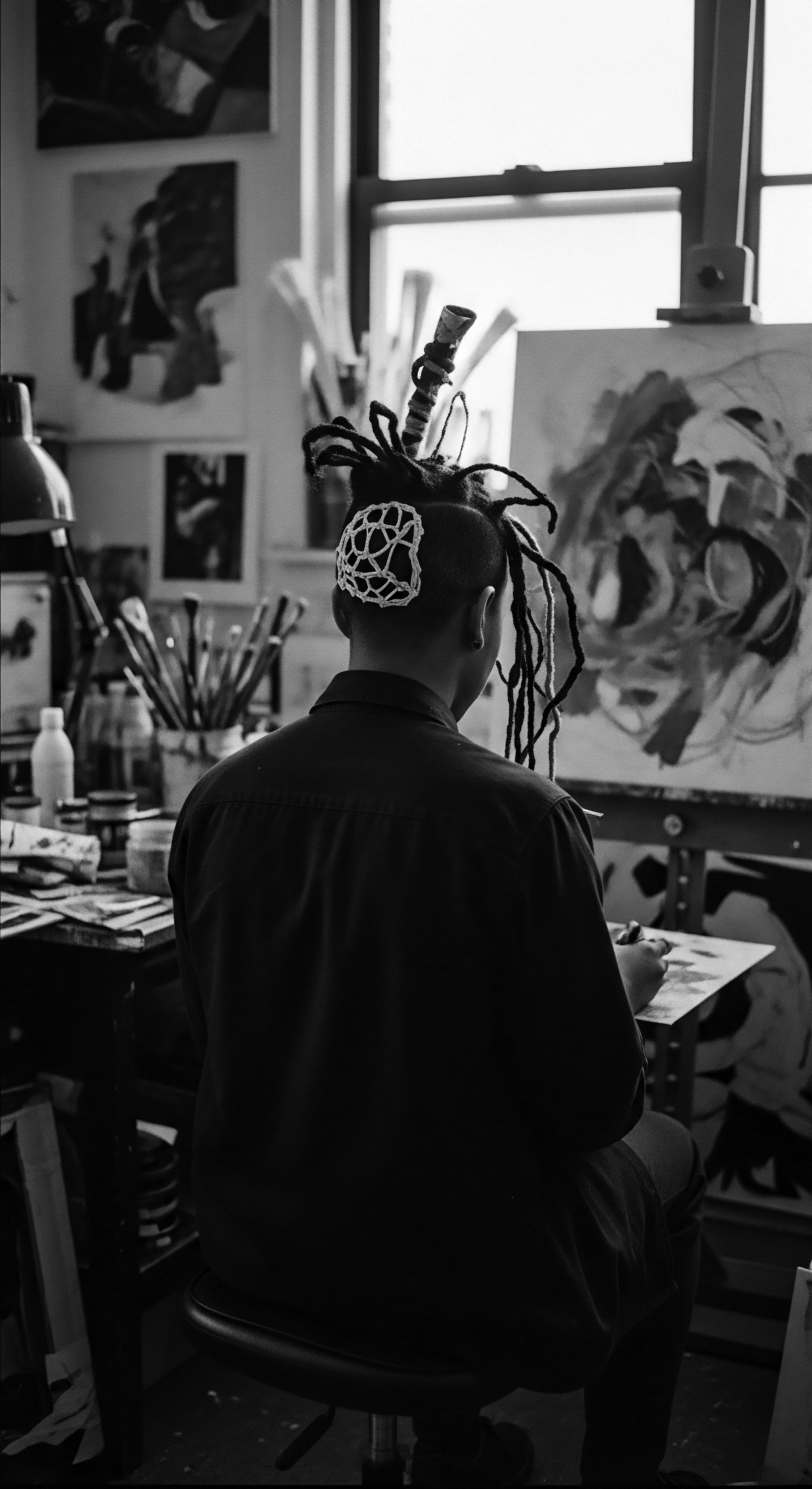
References
- Smith, J. A. & Jones, L. K. (2018). Hair Breakage Patterns in Different Hair Types ❉ A Comparative Study. Journal of Dermatology and Cosmetology, 14(3), 201-215.
- Gates, H. L. (2009). Hair Story ❉ Untangling the Roots of Black Hair in America. St. Martin’s Press.
- Byrd, A. F. & Tharps, L. D. (2001). Hair Story ❉ Untangling the Roots of Black Hair in America. St. Martin’s Press.
- Opoku, A. A. (1978). African Hair Styles ❉ An Illustrated Dictionary. Ghana Publishing Corporation.
- Mercer, K. (1994). Welcome to the Jungle ❉ New Positions in Black Cultural Studies. Routledge.
- Bankole, N. (2012). African Hair ❉ Its Cultural and Historical Significance. Africa World Press.
- Akerele, O. (1992). The Natural Hair Handbook ❉ A Guide to Afro-Textured Hair. O. Akerele.
- Patton, T. (2006). Buying Whiteness ❉ Race, Culture, and Identity from Napoleon to the New Negro. University of North Carolina Press.
